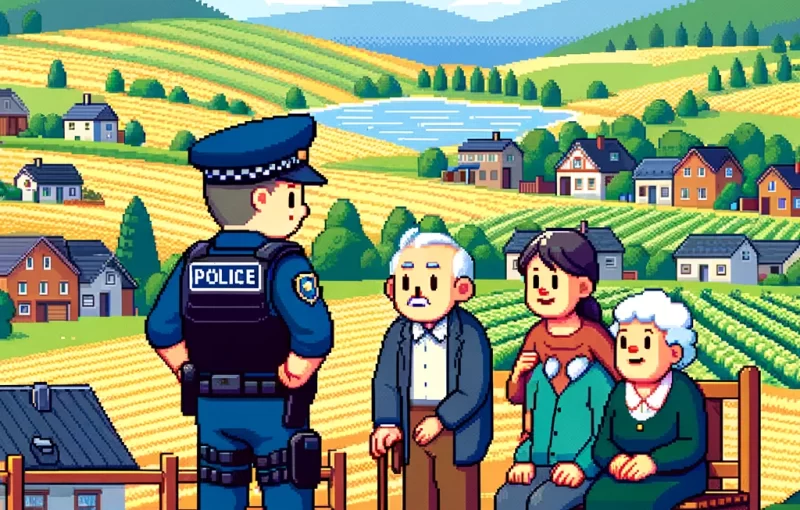
The Hidden Crisis in Rural Policing
by Jon Scaccia June 10, 2024Policing in rural America often escapes the intense scrutiny faced by urban law enforcement agencies. Yet, a recent study reveals that police shootings in rural areas are just as frequent, if not more so, than in cities. This finding sheds light on a critical but overlooked issue: the prevalence of police-related injuries and fatalities in non-urban settings. Let’s delve into this study to understand its significance and the implications for rural communities across the United States.
The Scope of the Study
The study, conducted by researchers from the Johns Hopkins Bloomberg School of Public Health, analyzed data from the Gun Violence Archive. It covered fatal and nonfatal police shootings in urban, suburban, and rural areas of the United States from 2015 to 2020. By examining these incidents, the researchers aimed to identify patterns and characteristics that differentiate police shootings across these varied settings.
Key Findings
Comparable Rates of Police Shootings
One of the most striking findings of the study is that rural areas experience rates of police shootings comparable to urban areas. This challenges the common perception that police violence is predominantly an urban issue. In fact, the study found that as rurality increased, the proportion of police shootings involving single responders, sheriffs, or multiple agency types also increased.
Incident Characteristics
Across all areas—urban, suburban, and rural—police shootings often followed similar types of incidents: domestic violence, traffic stops, and reports of shots fired. Behavioral health issues frequently co-occurred, highlighting the need for comprehensive crisis response systems that address mental health alongside law enforcement.
Disparities in Injuries by Race
The study also highlighted significant racial disparities. Black, Indigenous, and Hispanic residents were injured at higher rates than white residents in all examined areas. This mirrors broader national trends of racial inequities in policing and underscores the urgent need for reforms that ensure equitable treatment for all communities.
Rural-Specific Challenges
Policing in rural areas faces unique challenges. The geographical expanse means that officers often have to cover large areas, leading to longer response times and increased stress. Rural police departments, often underfunded and understaffed, may lack the resources and training necessary to handle complex and potentially volatile situations effectively.
Moreover, rural communities tend to have higher rates of gun ownership, which can escalate encounters with law enforcement. This environment creates a backdrop where the potential for violence is omnipresent, making every interaction fraught with risk.
Implications for Policy and Practice
The findings of this study suggest that reforms aimed at reducing police violence must extend beyond urban areas. Rural policing systems require tailored interventions that consider the specific challenges and conditions of non-urban settings.
- Crisis Prevention and Response Systems: There is a critical need for robust crisis intervention systems in rural areas. This includes better coverage for crisis prevention, dispatch, and response systems that can address behavioral health needs effectively. So, here’s where recent upscaling on the 988 Lifeline can be helpful.
- Legislative Measures: State and national legislation must include sheriffs’ offices in accountability measures. Given the significant role of sheriffs in rural policing, their inclusion is vital for ensuring comprehensive reforms.
- Training and Resources: Rural police departments need adequate funding and training to equip officers with the skills necessary to handle a wide range of situations, from domestic disputes to mental health crises. This also involves ensuring that rural officers have access to the same level of training and resources as their urban counterparts.
Encouraging Transparency and Accountability
One of the major issues highlighted by the study is the lack of transparency in police shootings. This is particularly acute in rural areas where media coverage is sparse and public scrutiny is limited. To address this, there must be a concerted effort to improve data collection and reporting on police use of force. This includes mandating comprehensive and standardized reporting across all law enforcement agencies.
Let us know in the comments!
- What are some potential strategies to improve crisis intervention and response systems in rural areas?
- How can we ensure that police reform efforts include and effectively address the needs of rural communities?
Conclusion
This study sheds light on a critical but often neglected aspect of policing in America: the prevalence and nature of police shootings in rural areas. It challenges the notion that police violence is primarily an urban issue and underscores the need for comprehensive reforms that include rural law enforcement agencies.
By addressing the unique challenges faced by rural police departments, ensuring equitable treatment across all communities, and improving transparency and accountability, we can work towards a more just and effective policing system nationwide.
Become a Health Innovator – Get Weekly Updates!
Stay at the forefront of public health with “This Week in Public Health.” Each issue updates you on the latest in research, community health, and advocacy. This newsletter is your tool for being an informed and active member of the health community. Subscribe for free and join a group dedicated to making a real difference in public health.
About the Author
Jonathan P. Scaccia, PhD is a clinical-community psychologist with a robust background in public health science and practice. He has led innovative evaluation and research initiatives targeting health equity, vaccine distribution, and organizational readiness. Dr. Scaccia has significantly contributed to major projects, including federal suicide prevention programs and vaccine equity strategies. He has provided expert consultation on public health improvement and evaluation for both national and international NGOs. His work, characterized by a commitment to accessible and impactful public health solutions, has been recognized with awards from the American Evaluation Association and the Society for Implementation Research Collaboration. Dr. Scaccia’s expertise in natural language processing, data analysis, and community-based research makes him a leading voice in advancing public health practices.
Leave a Reply